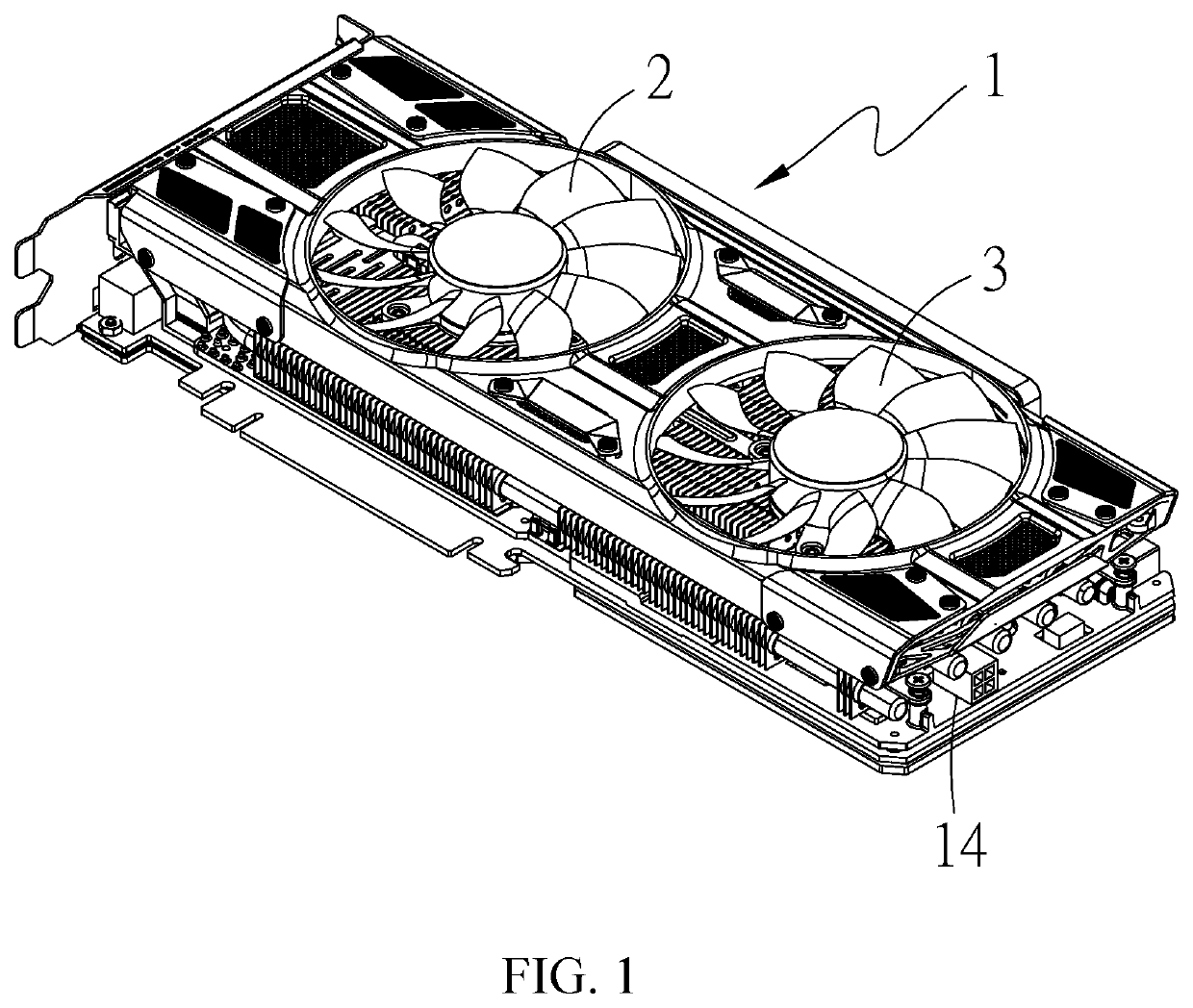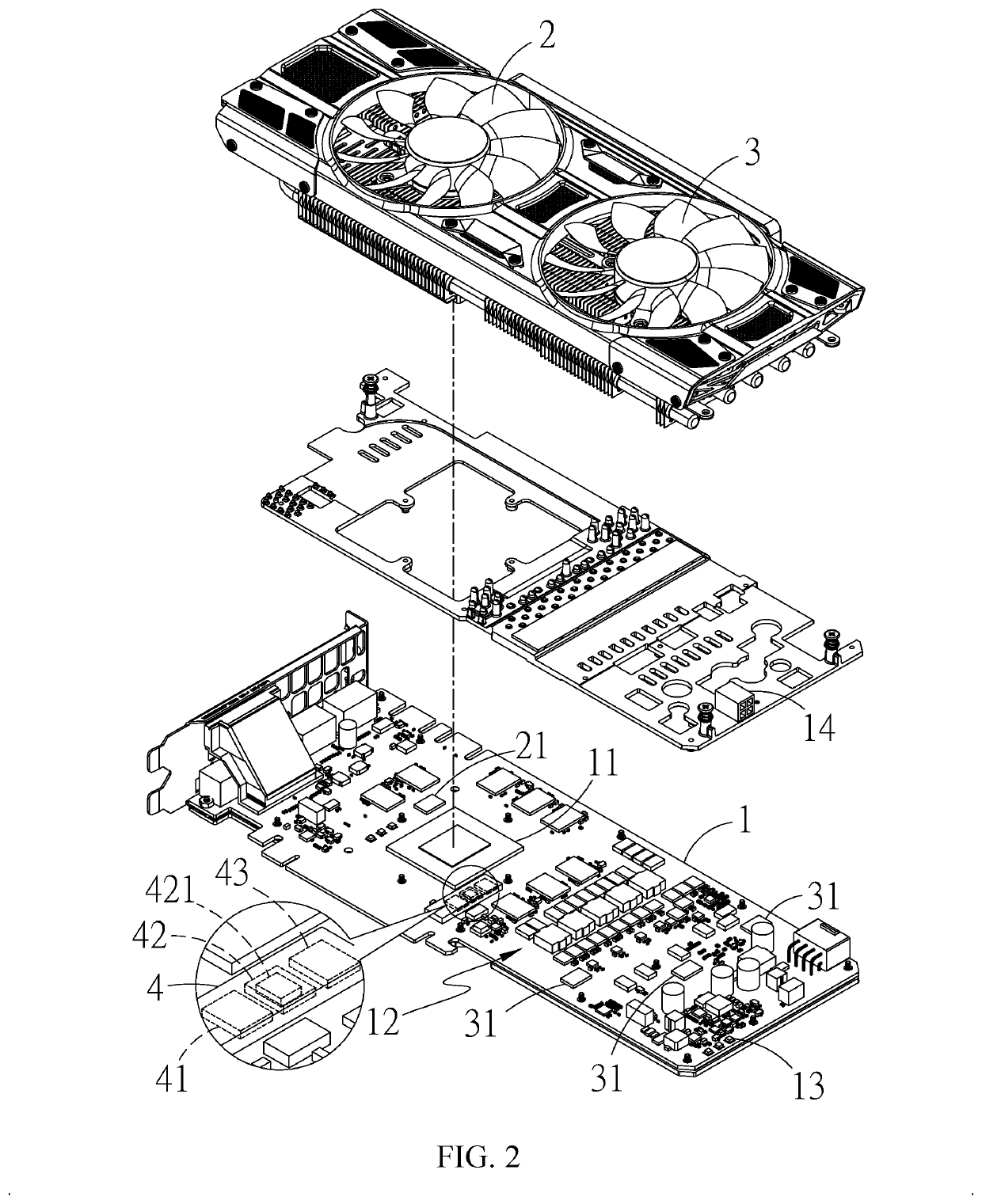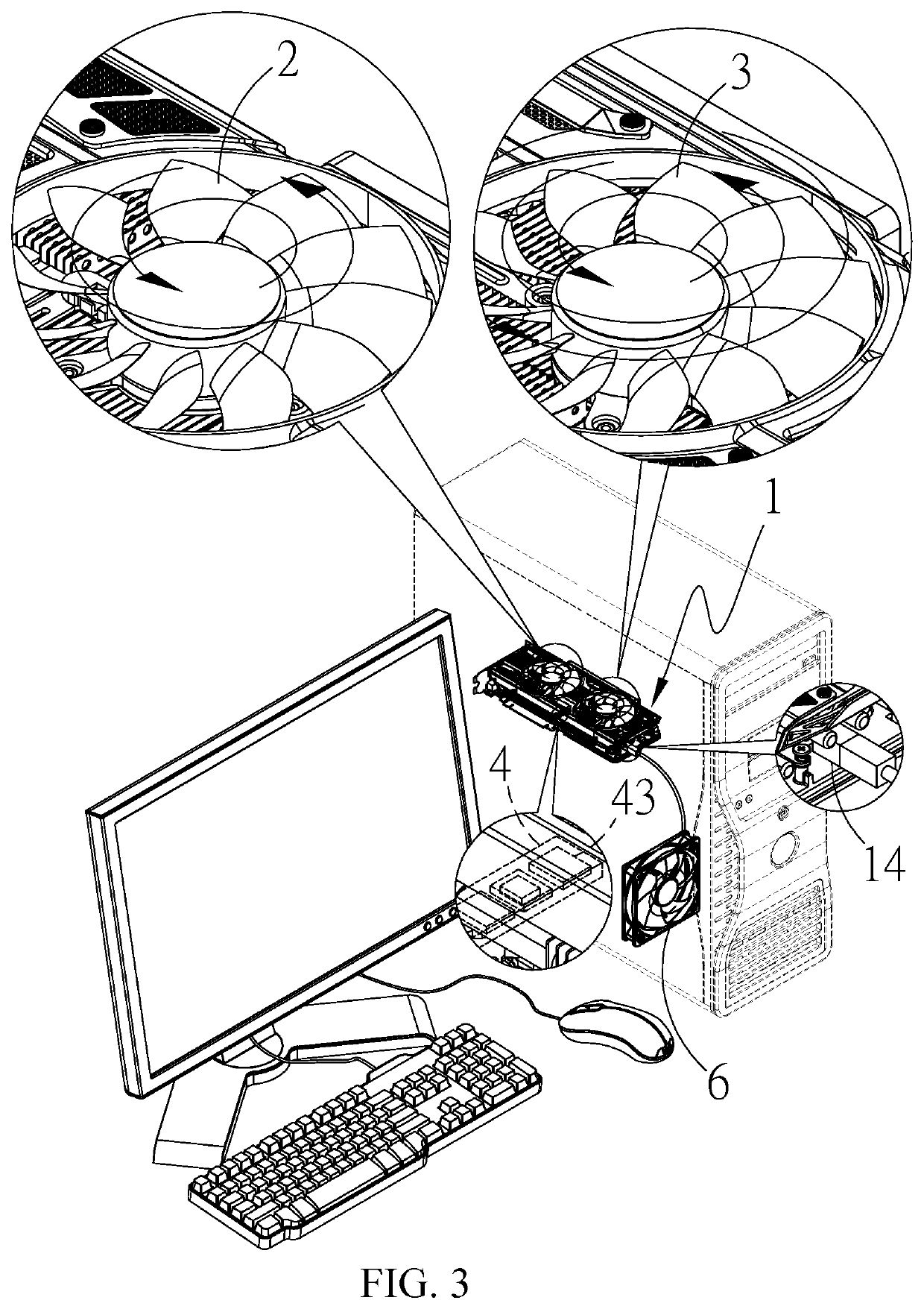Asynchronous temperature control integrated device
a temperature control and integrated device technology, applied in the direction of instruments, liquid/fluent solid measurement, signalling system, etc., can solve the problems of increasing power consumption, increasing the accumulation of power consumption, and consuming a large amount of electrical power, so as to improve the overall airflow, improve the temperature control conditions, and reduce the internal temperature of the system
- Summary
- Abstract
- Description
- Claims
- Application Information
AI Technical Summary
Benefits of technology
Problems solved by technology
Method used
Image
Examples
Embodiment Construction
[0023]Referring to FIGS. 1 and 2, it can be clearly seen that the present invention comprises:
[0024]a graphics card body 1, the graphic card body 1 comprising a graphics processor 11 and a power supply circuit 12 arranged at one side of the graphics processor 11;
[0025]at least one external fan connection port 14, which is arranged on the graphics card body 1;
[0026]a first heat dissipation device 2, which is arranged on the graphics processor 11, a heat dissipation fan being taken as an example in the present invention;
[0027]at least one first temperature sensor 21, which is arranged at one side of the first heat dissipation device 2;
[0028]a second heat dissipation device 3, which is arranged on the power supply circuit 12, a heat dissipation fan being taken as an example in this invention;
[0029]a plurality of second temperature sensors 31, which are arranged at one side of the second heat dissipation device 3;
[0030]a plurality of light emission elements 13, which are arranged on the...
PUM
 Login to View More
Login to View More Abstract
Description
Claims
Application Information
 Login to View More
Login to View More - R&D
- Intellectual Property
- Life Sciences
- Materials
- Tech Scout
- Unparalleled Data Quality
- Higher Quality Content
- 60% Fewer Hallucinations
Browse by: Latest US Patents, China's latest patents, Technical Efficacy Thesaurus, Application Domain, Technology Topic, Popular Technical Reports.
© 2025 PatSnap. All rights reserved.Legal|Privacy policy|Modern Slavery Act Transparency Statement|Sitemap|About US| Contact US: help@patsnap.com



